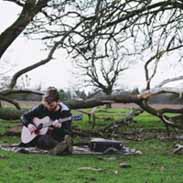Rhetorical Questions Flashcards, test questions and answers
Discover flashcards, test exam answers, and assignments to help you learn more about Rhetorical Questions and other subjects. Don’t miss the chance to use them for more effective college education. Use our database of questions and answers on Rhetorical Questions and get quick solutions for your test.
What is Rhetorical Questions?
Rhetorical questions are a type of literary device used to encourage readers or listeners to think about a topic in a different way. They can be used to provoke thought, suggest alternate perspectives, and even draw attention to an issue. Rhetorical questions do not require an answer rather, they are used to make the audience consider the implications of your argument.At first glance, rhetorical questions may seem like an elementary tool for persuasive writing; however, when used effectively, they can be powerful tools for creating impactful arguments. In fact, many authors have utilized rhetorical questions throughout history in order to emphasize their points and drive home their messages. For example, Martin Luther King Jr.’s I Have a Dream speech is peppered with rhetorical questions that helped him articulate his vision and invoke emotion from his audience: When will we be able to speed up the day when all of God’s childrenblack men and white menwill be able to join hands? In addition to emphasizing arguments and invoking emotion, rhetorical questions can also be used as callbacks or reminders of prior points made throughout an argument. This technique is particularly effective when highlighting the implications of certain points or counterarguments made by opponents as it allows you to concisely demonstrate why those points are invalid without taking up too much space in your own writing. Overall, rhetorical questions are essential tools for constructing strong arguments and getting your point across effectively. When used strategically with other persuasive techniques such as analogies or stories, you can create powerful arguments that will leave lasting impressions on your readers or listeners.
















